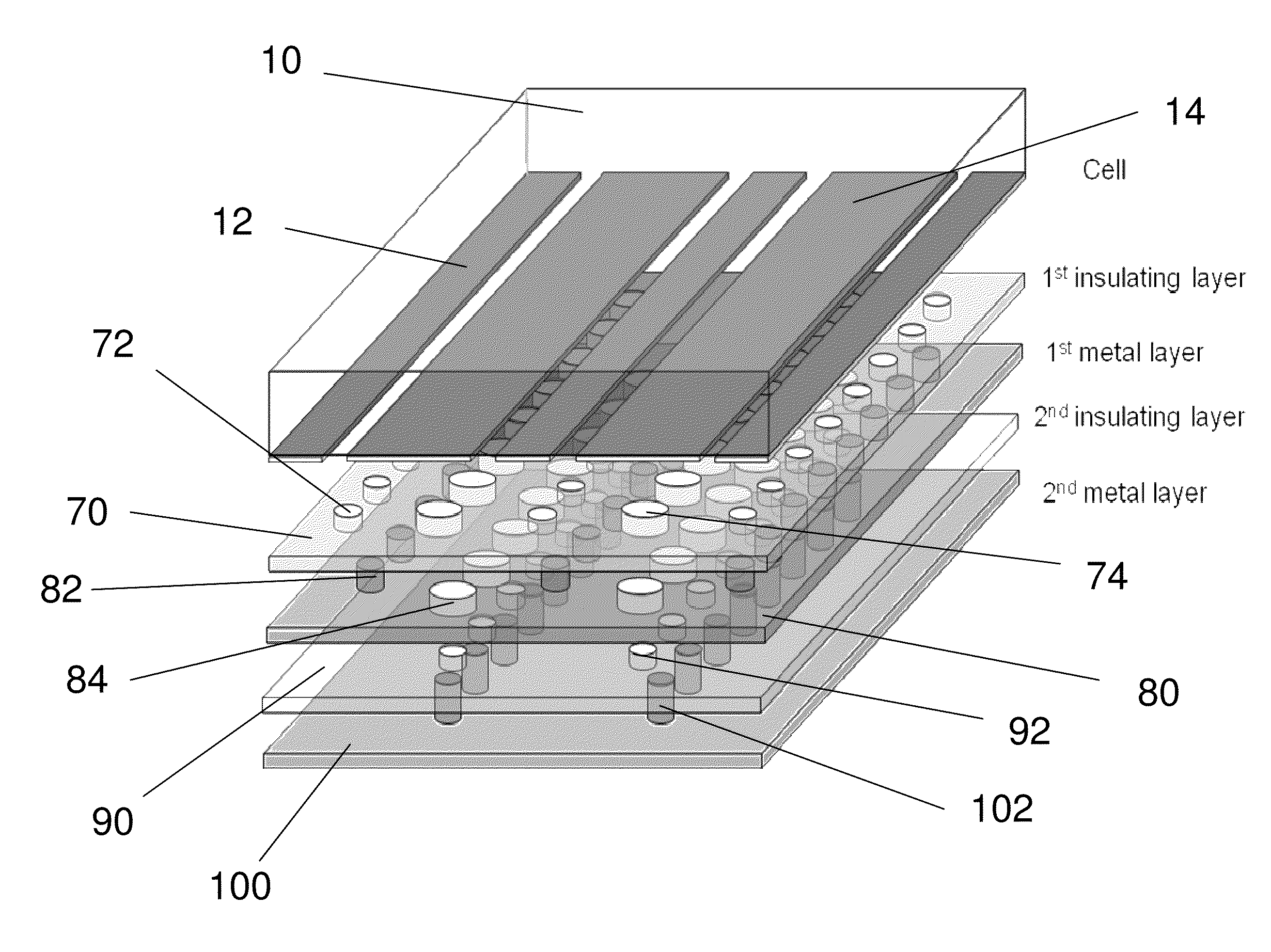Methods and apparatuses for improving power extraction from solar cells
a technology of solar cells and solar energy, applied in electrical apparatus, semiconductor/solid-state device manufacturing, semiconductor devices, etc., can solve the problems of reducing the series resistance of metal grid, affecting the conversion efficiency, and significantly reducing the solar conversion efficiency and less power extraction, so as to minimize the ohmic resistance associated, maximize solar energy conversion efficiency, and reduce the effect of energy loss
- Summary
- Abstract
- Description
- Claims
- Application Information
AI Technical Summary
Benefits of technology
Problems solved by technology
Method used
Image
Examples
Embodiment Construction
[0024]The foregoing background and summary, as well as the following detailed description of the drawings, will be better understood when read in conjunction with the appended drawings. For the purpose of illustrating the invention, there is shown in the drawings embodiments which are presently preferred. It should be understood, however, that the invention is not limited to the precise arrangements and instrumentalities shown. Throughout the drawings, like reference numerals refer to like elements. The terms “front” and “back” are used to distinguish between the different surfaces of an element. The use of the terms does not mean that the “front” surface always comes before the “back” surface. Either position is considered to be within the scope of the invention.
[0025]Disclosed herein are schemes designed to utilize the geometrical configuration and mechanical structure of back contact solar cells to minimize energy losses resulted from ohmic resistances related to solar cells used...
PUM
 Login to View More
Login to View More Abstract
Description
Claims
Application Information
 Login to View More
Login to View More - R&D
- Intellectual Property
- Life Sciences
- Materials
- Tech Scout
- Unparalleled Data Quality
- Higher Quality Content
- 60% Fewer Hallucinations
Browse by: Latest US Patents, China's latest patents, Technical Efficacy Thesaurus, Application Domain, Technology Topic, Popular Technical Reports.
© 2025 PatSnap. All rights reserved.Legal|Privacy policy|Modern Slavery Act Transparency Statement|Sitemap|About US| Contact US: help@patsnap.com



